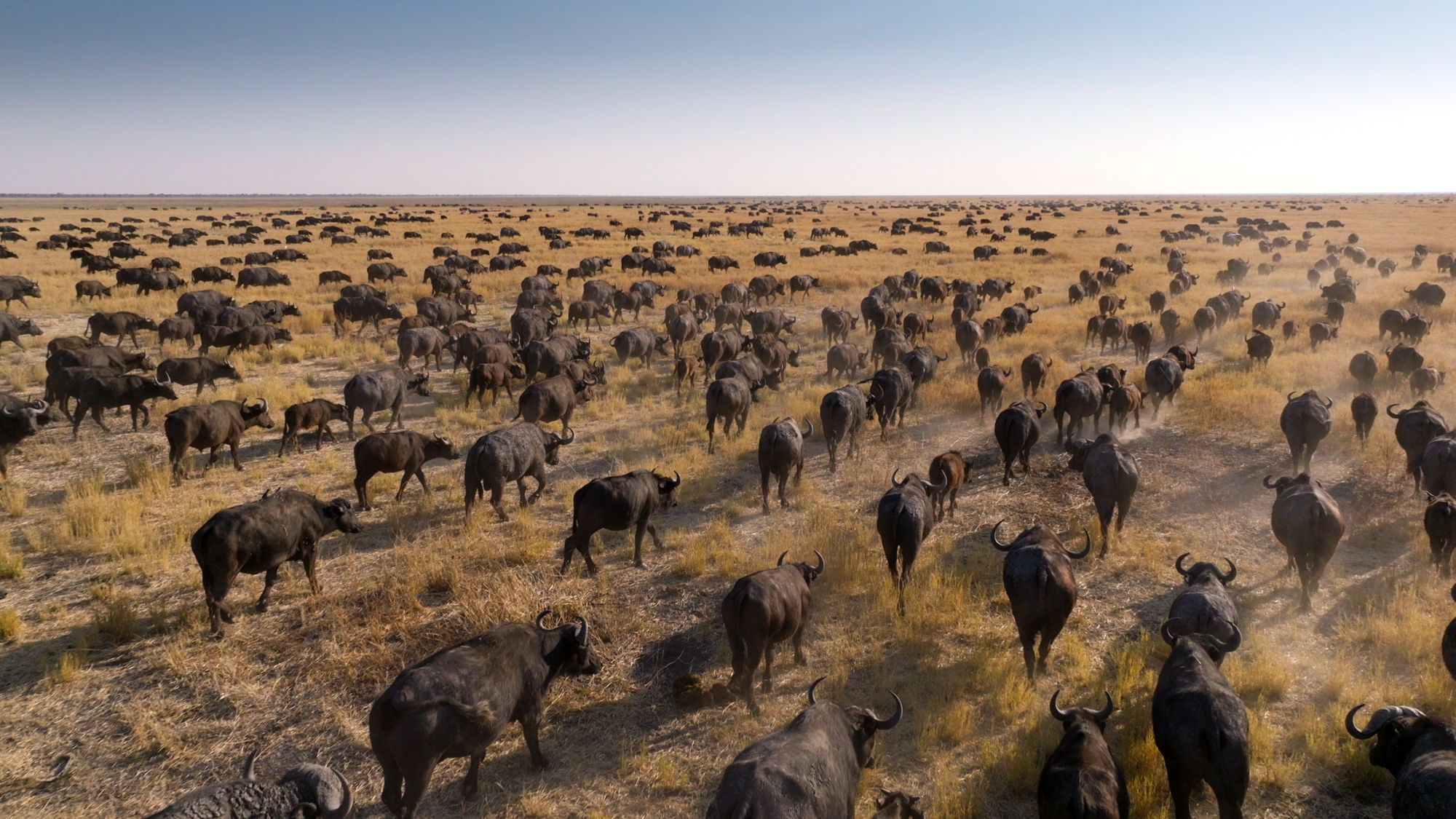— Episode synopsis —
Migration is the oldest and most vital survival strategy in the animal kingdom, and every day, billions of creatures great and small are making extraordinary journeys. In the peak of dry season, the barren savannah of Botswana drives a megaherd of cape buffalo to a remote wash where hungry lions await their arrival, while in Ethiopia, the largest swarm of desert locusts in recent memory takes to the sky. As the sun warms the oceans, massive algae blooms summon humpback whales to the Bering Sea to feed, but polar bears and walrus in the Arctic struggle to navigate melting sea ice. Springtime also brings new life, as tiny ancient murrelet chicks emerge from their nests in the Pacific Northwest and race like clockwork toys towards the sea – but on a distant island north of Hawaii, tons of plastic are impacting the life cycle of Laysan albatross chicks, and tiger sharks circle in the shallows to feed on chicks that live long enough to take their first flight.
Lions and Buffalo in Botswana
Drone footage from this shoot allowed the size of the herd to be counted and surveyed for the first time, revealing it to be over 5000 strong, the largest buffalo herd in Africa. The filmmaking team on the ground also had a rude awakening as they slept on the first night in their temporary camp: a pair of male lions came to check out the new visitors, spending 10 minutes peering in mosquito net windows and probing the tents.
Locusts Swarm in Ethiopia
2020 saw some of the largest local swarms in recent history, truly apocalyptic in size as they crossed entire continents and seas in search of food. The team drove long distances each day to keep up with the speedy insects, in hopes of filming the swarm before pesticides took effect.
Ancient Murrelet Chicks in British Columbia
Murrelet chicks travel farther than any newborn bird on earth, and the species spends more of its life at sea than any other bird. Their departure from their nests has never before been filmed in this detail, with the latest low-light filming technology enabling the team to capture incredible detail and clarity despite the events unfolding in the midnight darkness. In fact, this was the first crew to film the murrelets’ emergence since David Attenborough’s The Life Of Birds 25 years ago.
Polar Bears in the Arctic
After weeks of filming, the team was fortunate to capture a young male bear performing aquatic stalks of seals on the sea ice. It’s a largely unsuccessful technique that’s become necessary thanks to the melting of sea ice, requiring bears to swim for over eight hours a day in search of food.
Walrus in the Arctic
A newborn walrus calf can swim from day one, although sometimes they still need to “hitch a ride” on their mother. The team’s footage of the baby walrus traveling on its mother’s back is something that’s rarely captured, and it’s the result of a diligent month spent living and working with the Inuit community of Nunavut amidst deep snowstorms and high winds.
Humpback Whales and Sooty Shearwaters in the Bering Seas
As thousands of humpback whales travel from Mexico to the Bering Sea, they are joined by a million sooty shearwaters who’ve embarked on the longest animal migration on the planet – 65,000 kilometers. Together, the two species spend 90 days feasting on krill, and the Our Planet team worked alongside a fishing fleet to capture this spectacle, one of the greatest gatherings of life on Earth.
Albatross and Tiger Sharks off Laysan
Laysan albatross chicks are “anchored to the spot” for their first five months, entirely dependent on their parents returning with food. When those chicks are ready for their first flight, the seas around Laysan ripple with tiger sharks who’ve traveled as far as 2000 miles to wait for the fledglings to fail. During the shoot, the sharks nearly claimed a far bigger prize: as the team set out in inflatable boats to capture underwater footage, they came under attack from two enormous tiger sharks who burst the vessel and forced them to abandon their efforts.

